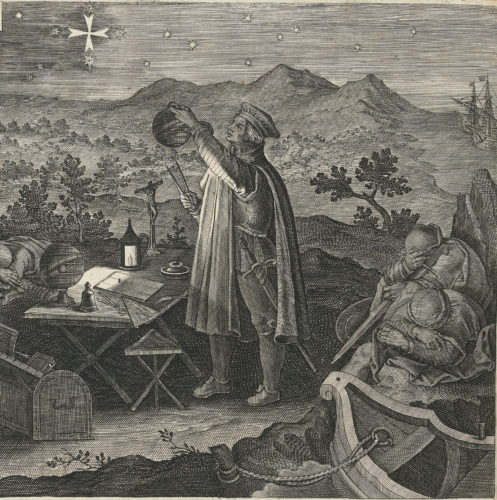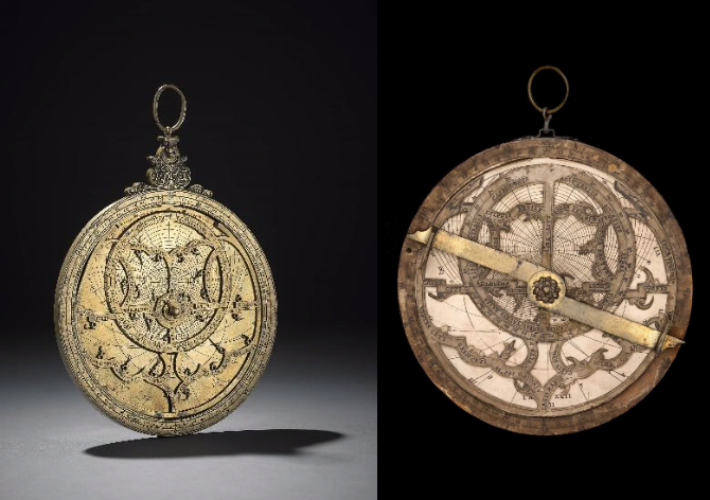This image, designed by the Flemish artist Jan Van der Straet (or Stradanus, as he is more commonly known) depicts the Florentine explorer Amerigo Vespucci (1455-1512) locating the constellation called the Southern Cross. It is night time, and his companions seem not to have been able to stay awake, but Vespucci stands in the centre, holding up a compass and a spherical astrolabe - the tool celebrated in the title of the image.
A second astrolabe sits on the impromptu desk in front of Vespucci. The complex ingenuity of Renaissance astrolabes enabled their users to identify stars and planets, and to measure their positions and movements. The image emphasises the dual function of this process. On the one hand, the very shape of the Southern Cross gives it Christian significance, an association reinforced by the model of a crucified Christ on Vespucci’s desk. On the other hand, the ships in the background and the boat in the foreground signal the practical utility of astronomy for navigation, and thus for global exploration and international trade.
Click on an astrolabe for more information.












